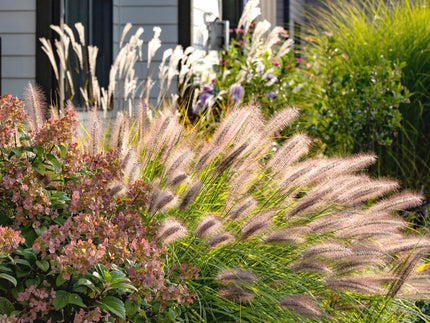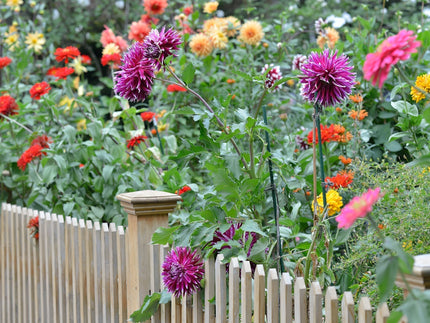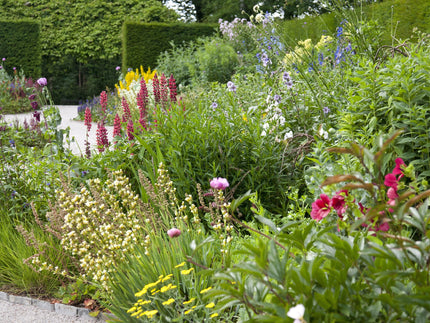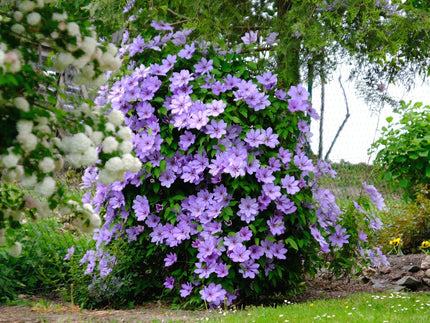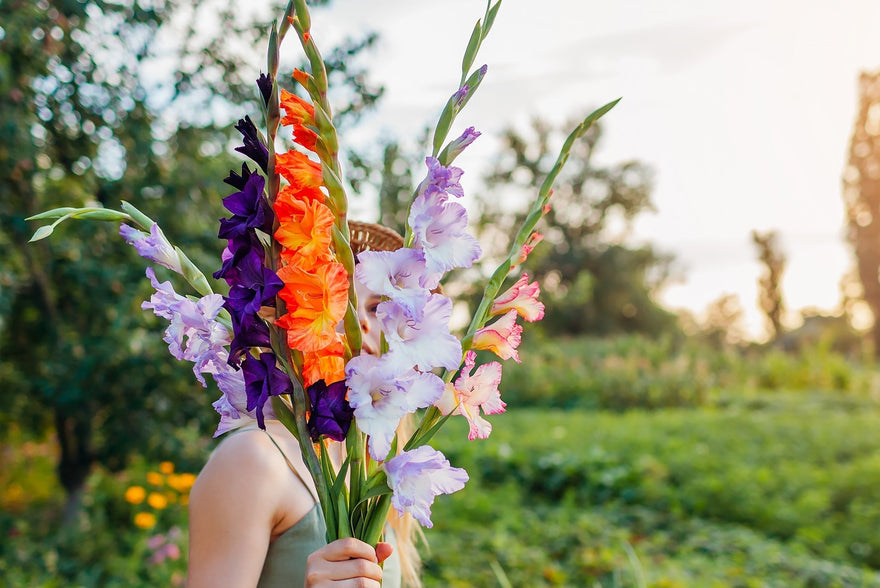
Gladiolus FAQs: the top questions, answered
Gladiolus are one of the most striking summer flowers, with their tall, elegant spikes and vibrant colours adding a dramatic touch to gardens and floral arrangements. Whether you’re new to growing gladiolus or looking for expert tips, this guide answers the most frequently asked questions about these beautiful flowers.
1. What are gladiolus and why are they popular?
Gladiolus are summer-flowering plants that grow from corms. Known for their vertical flower spikes and bright, trumpet-shaped blooms, they are a favourite among gardeners for their ability to add height, structure, and colour to borders. They also make excellent cut flowers due to their long vase life.
2. What is the difference between gladiolus bulbs and gladiolus corms?
While often referred to as "gladiolus bulbs", they actually grow from corms. Corms are swollen underground stems that store nutrients for the plant. Unlike bulbs, which have layered scales (like onions), corms are solid and replaced each year as the plant grows.
3. When should you plant gladiolus corms in the UK?
Plant gladiolus corms from late March to early June, after the risk of frost has passed. For a continuous display, plant in succession every two weeks until early summer.

4. Where is the best place to plant gladiolus corms?
Gladiolus thrive in sunny, sheltered locations with well-draining soil. They need at least six hours of direct sunlight daily and should be planted in a spot protected from strong winds, as their tall stems can be prone to bending.
5. How deep should you plant gladiolus bulbs?
Plant gladiolus corms 4–6 inches deep, with the pointed end facing upwards. Space them 6 inches apart to allow good air circulation and root development.
6. Can gladiolus be grown in pots?
Yes, gladiolus can be successfully grown in containers, provided they have enough space for root growth. Choose a deep pot (at least 25-30cm) and plant the corms closer together than in the ground. Dwarf or shorter varieties are best suited for containers.

7. Do gladiolus come back every year?
In milder parts of the UK, gladiolus may return each year if the soil is well-drained and they are mulched in winter. However, in colder regions, it’s best to lift and store the corms in autumn to protect them from frost.
8. How do you care for gladiolus during the growing season?
-
Watering: Keep the soil consistently moist but not waterlogged. Water deeply during dry spells.
-
Feeding: Apply a balanced liquid fertiliser every two to three weeks to encourage strong growth.
-
Staking: Taller varieties may need support to prevent stems from flopping.
9. When do gladiolus bloom?
Gladiolus typically bloom 8–12 weeks after planting. If planted in succession, they can flower from July to September, extending the season of interest in your garden.

10. How do you cut gladiolus for flower arrangements?
For the longest vase life, cut gladiolus when the bottom flowers on the spike begin to open. Use a sharp knife or secateurs, leaving some foliage on the plant to allow energy to return to the corm. Change the vase water every two days to keep the flowers fresh.
11. How do you store gladiolus corms over winter?
In colder areas, lift the corms after the foliage has died back. Allow them to dry in a warm, airy place for a couple of weeks, then store them in a cool, dry, frost-free environment in breathable bags or trays filled with dry sawdust.
12. Do gladiolus attract pollinators?
Yes, gladiolus flowers attract bees, butterflies, and other pollinators, making them a great choice for wildlife-friendly gardens.

13. Are gladiolus susceptible to pests and diseases?
The most common pest affecting gladiolus is thrips, which can cause deformed flowers. To prevent infestations, inspect plants regularly and consider using an insecticidal soap if necessary. Fungal diseases such as botrytis can occur in damp conditions, so ensure good air circulation.
14. Can you plant gladiolus bulbs in autumn?
No, gladiolus corms should be planted in spring after the risk of frost has passed. Autumn planting can lead to rot, as the corms won’t have enough warmth to establish themselves.
15. Can gladiolus be left in the ground over winter?
In southern parts of the UK, where winters are mild, gladiolus may survive in the ground if heavily mulched. However, in colder areas, lifting and storing the corms is the best way to ensure they return next year.

16. How can you encourage bigger blooms on gladiolus?
Feeding with a high-potassium fertiliser (such as tomato feed) once the flower spikes develop will promote larger, more vibrant blooms. Removing spent gladiolus flowers can also help the plant focus energy on producing new flowers.
17. How long do gladiolus flowers last?
Each flower spike lasts about two weeks in the garden. When cut for arrangements, gladiolus can remain fresh in a vase for up to 10 days with regular water changes.
18. What are the best gladiolus varieties for UK gardens?
For a stunning display, consider these top-performing varieties:
-
Gladiolus 'Performer' – Delicate soft pink flowers with a classic appeal
-
Gladiolus 'Essential' – A pastel-coloured variety with beautifully balanced blooms
-
Gladiolus 'Mixed Colours' – A vibrant mix, perfect for a cheerful summer display
-
Gladiolus 'Royal Class' – Deep red, elegant flowers that add richness to borders
-
Gladiolus 'Milka' – Soft lavender blooms with a graceful, romantic look
-
Gladiolus 'Black Star' – Dramatic dark blooms, almost black, for striking contrast
These gladiolus varieties are well-suited to UK conditions and will reward you with healthy, long-lasting flowers.

Conclusion
Gladiolus are a fantastic addition to any UK garden, offering height, vibrant colour, and long-lasting beauty. Whether planted in beds, borders, or pots, these easy-to-grow flowers provide a stunning summer display with minimal effort.
By following the tips in this FAQ guide, you can enjoy a continuous supply of beautiful gladiolus blooms season after season!
































































































































































































